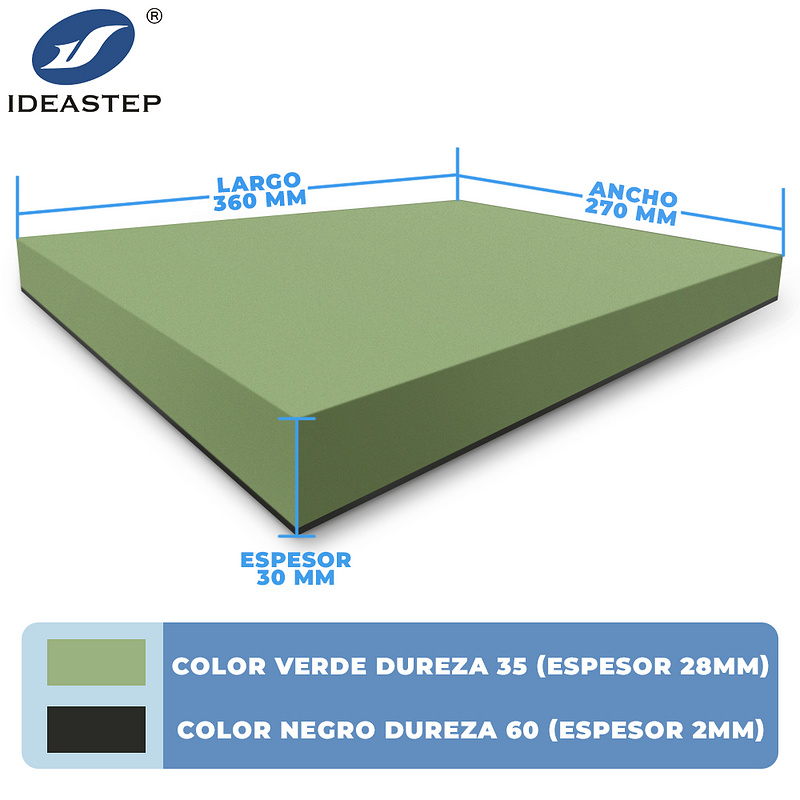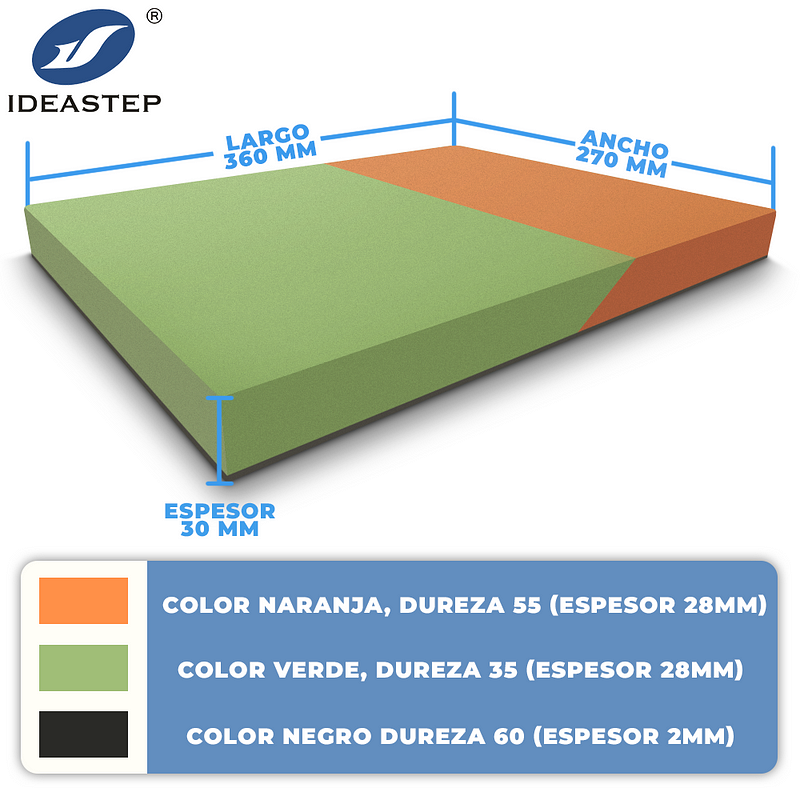How to Use EVA Foam Sheets with 30mm Thickness for Industrial Applications
EVA foam sheets possess unrivaled strength, shock absorbing capacity, and overall usage variation, making them truly prestigious in any industrial application. Among the several thicknesses available, 30 mm thick EVA foam sheets appear very outstanding in performance and applicability. This paper looks at how to effectively use 30mm thick EVA foam sheets in industrial scenarios, giving tips to maximize the benefits associated with them.
Understanding 30mm Thick EVA Foam Sheets
EVA foam sheets are made from a mixture of ethylene and vinyl acetate that renders this material with flexibility, resilience, and cushioning. A thickness of 30 mm gives very significant cushioning and support; this material is useful in applications that are complicated, industrial in nature, and require extra cushioning for added comfort. This thickness is suitable for situations that require substantial impact resistance and comfort.

Benefits of Using 30mm EVA Foam Sheets
Improved Shock Absorption
The thickness of 30 mm provides better shock absorption, hence reduces the effect on equipment and people. This makes the foam ideal for applications where high-impact resistance is required.
Durability
EVA foams resist wear and tear. A thickness of 30 mm enhances this aspect of their properties and makes them suitable for high-traffic areas, as well as heavy usages.
Versatility
Applied in padding, insulation, and protective barriers, the 30mm thick EVA foam sheets range is versatile across various industrial applications. They find application in manufacturing, construction, and machinery.

Selecting the Right 30mm EVA Foam Sheets
The choice of appropriate 30mm EVA foam sheets requires a number of factors to be taken into consideration:
1. Application Requirements
Determine the specific requirements of your application with regard to impact resistance, cushioning, or insulation. This shall guide you in choosing the right category of EVA foam sheet.
2. Environmental Conditions
The environmental conditions where the foam sheets are going to be used need to be taken into consideration. EVA foam sheets with UV and chemical resistance work quite well in outdoor or harsh environments.
3. Customization Needs
Determine if you will need customized foams in terms of specific shapes or sizes. This will help in optimizing the fit and functionality of the foam in your application.

Cutting and Shaping 30mm EVA Foam Sheets
Correct cutting and shaping are the ways through which optimal performance can be derived from the 30mm EVA foams. Apply these tips:
1. Use Sharp Tools
Use sharp utility knives or bandsaw for clean and accurate cuts. Otherwise, on account of a dull blade, rough edges may appear and, in time, affect the performance of the foam.
2. Measuring Correctly
Measurement should be correct to avoid wastage and to get a perfect fitting. Measurement with a ruler and marking the sheets of foam with a marker shall follow before cutting them.
3. Avoid Too Much Heat
This can result in the EVA foam being tacky or even melting due to excessive heat. As a precaution, therefore, work in a well-ventilated area and avoid overheating the foam during its cutting and shaping.

How to Install 30mm EVA Foam Sheets
The installation of 30mm EVA foam sheets should be done correctly to enable their benefits to properly manifest. This is how you do it:
1. Prepare the Surface
The surface onto which you are installing the foam should be free from dust, oil, or any other residue. A clean surface offers good adhesion.
2. Glue Application
Apply adhesive strictly made for EVA foam installation. Apply it evenly on both surfaces. Press firmly, and then run a roller or squeegee to squeeze air bubbles and ensure full contact.
3. Edges Sealing
Seal edges with an appropriate sealant to prevent water infiltration and extend the life span of the foam sheets. This will eliminate peeling off, thus enhancing durability.

How to Maintain 30mm EVA Foam Sheets
Proper maintenance will extend the life of EVA foam sheets. Here’s how:
1. Regular Cleaning
Clean the EVA foam regularly using mild detergents and water. Avoid harsh chemicals and abrasive cleaners that may directly harm the foam.
2. Periodic Inspection
Also, if one notices wear, damage, or loss of edge retention in the foam sheets, note it and take corrective measures to retain full performance.
3. Proper Storage
Store EVA foam sheets in a cool, dry place away from direct sunlight and extreme temperatures. Proper storage prevents brittleness and discoloration.

Troubleshooting Common Issues
Even with proper care, issues may occasionally arise. Here’s how to resolve common issues:
1. Peeling Edges
In case the edges peel off, it could be due to the lack of adhesive or poor preparation. Reapply adhesive; clean the surface properly; and then reinstall the foam sheet.
2. Bubbling or Bumps
Trapped air may cause bubbles or bumps. Trim and reseal the areas which trap the air for a smooth surface.
3. Discoloration
EVA foam can yellow over the years, but this generally does not affect performance. A protective treatment will improve the appearance of the foam sheets.
FAQ
Can the 30mm EVA foam sheets be used outdoors?
Yes, 30mm EVA foam sheets can be used outdoors if they are treated to have UV resistance and to withstand environmental conditions.
How do I dispose of used EVA foam sheets?
Dispose of EVA foam sheets according to local regulations. Most recycling companies accept EVA materials, but confirm this with your waste management centers.
Can damaged EVA foam sheets be repaired?
Small damages can be repaired using adhesives or sealants. Extensive damage may need replacing the foam sheet.
